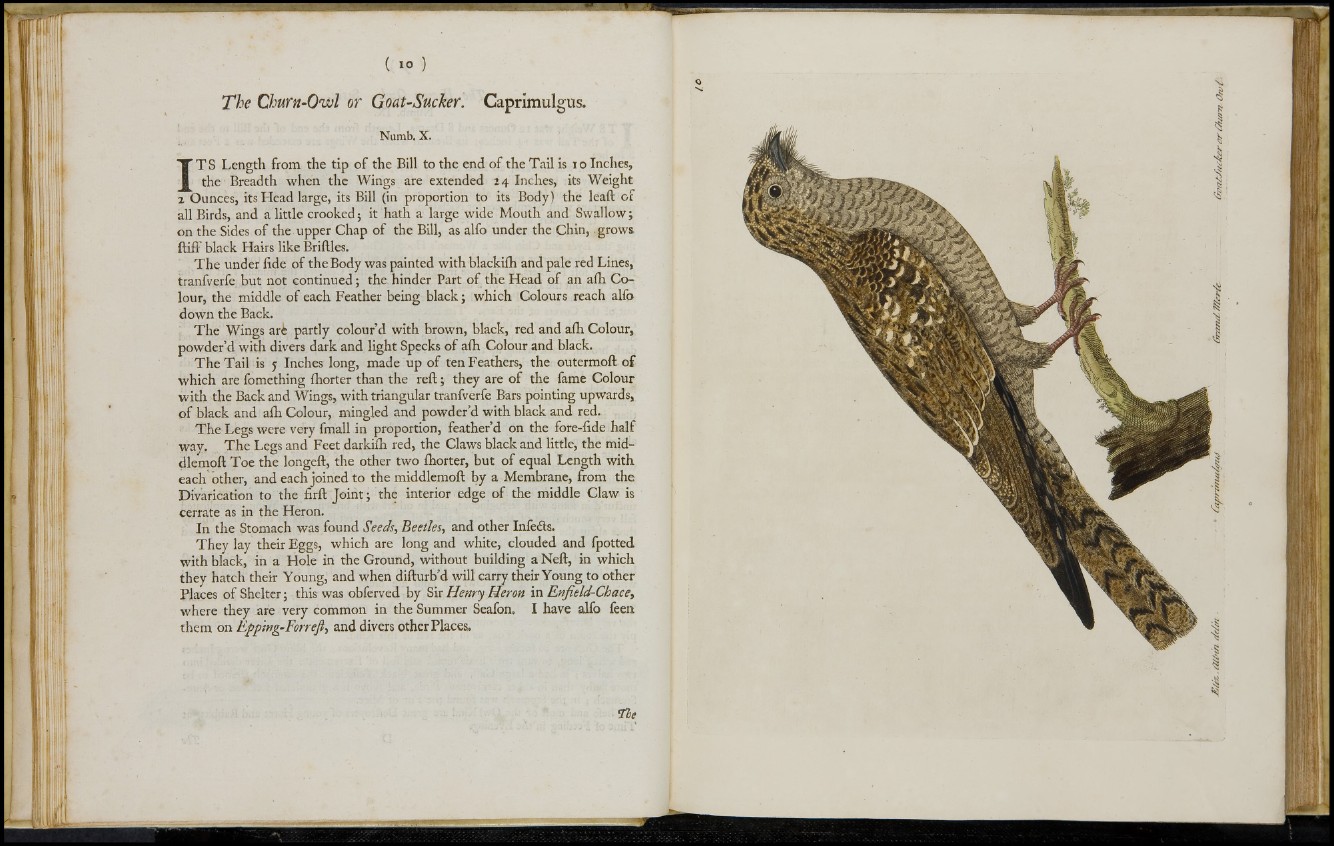
The Churn-Owl or Goat-Sucker. Caprimulgus.
Numb. X.
IT S Length from the tip of the Bill to the end of the Tail is 10 Inches,
the Breadth when the Wings are extended 14 Inches, its Weight
2 Ounces, its Head large, its Bill (in proportion to its Body) the leaft of
all Birds, and a little crooked; it hath a large wide Mouth and Swallow;
on the Sides of the . upper Chap of the Bill, as alfo under the Chin, grows
ftiff black Hairs like Briftles.
The under fide of the Body was painted with blackiih and pale red Lines,
tranfverfe but not continued; the hinder Part of the Head of an aih Colour,
the middle of each Feather being black; which Colours reach alfo
down the Back.
The Wings art partly colour’d with brown, black, red and aih Colour,
powder’d with divers dark and light Specks of aih Colour and black.
The Tail is 5 Inches long, made up of ten Feathers, the outermoft of
which are fomething ihorter than the reft; they are of the fame Colour
with the Back and Wings, with triangular tranfverfe Bars pointing upwards,
of black and aih Colour, mingled and powder’d with black and red.
The Legs were very fmall in proportion, feather’d on the fore-fide half
way. The Legs and Feet darkiih red, the Claws black and little, the mid-
dlemoft Toe the longeft, the other two ihorter, but of equal Length with
each other, and each joined to the middlemoft by a Membrane, from the
Divarication to the firft Joint; the interior edge of the middle Claw is
cerrate as in the Heron.
In the Stomach was found Seeds, Beetles, and other Infefts.
They lay their Eggs, which are long and white, clouded and fpotted
with black, in a Hole in the Ground, without building a Neil, in which
they hatch their Young, and when difturb’d will carry their Young to other
Places of Shelter; this was obferved by Sir Henry Heron in EnfieU-Chace,
where they are very common in the Summer Seafon. I have alfo feen
them on Eppwg-Fonefi, and divers other Places.
srit